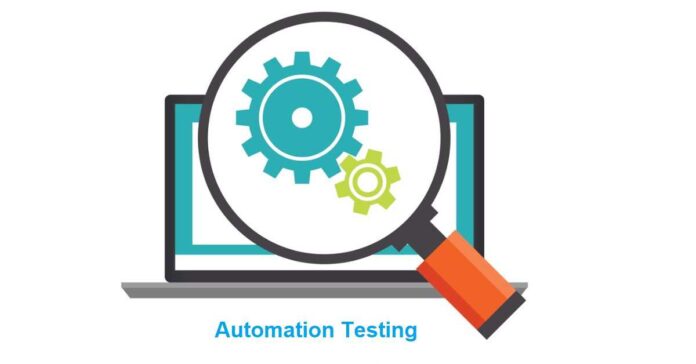According to a recent study by Future Market Insights, the codeless testing market is estimated to reach a US $2 billion valuation in 2023. It is further expected to grow to reach US $8.6 billion by 2033. Looking at these impressive numbers, it is clear that the demand for codeless testing is on the rise globally.
One of the major drivers for its success is the adoption of cloud-based automation tools by industries across the globe because of the flexibility and cost-effectiveness these tools offer. Besides, the ML and AI mechanisms used in codeless testing tools make it a far superior choice for all companies as they speed up the testing process.
While this is just the tip of the iceberg, codeless test automation tools are considered the future of software testing because of the various other benefits they offer:
- Derive better testing quality results
- Improve the overall CI/CD processes
- Give real-time analytics on the testing
- Lower maintenance costs
- Optimize the effort and time required in testing
Codeless automation testing is further considered well-suited for the rising demands of DevOps and Agile methodologies. By integrating codeless testing tools into the existing pipeline, organizations achieve the right balance of quality and speed while launching their applications in the market.
So far, codeless automation holds tremendous promise to revolutionize testing in future and help organizations overcome the difficulties they faced earlier. In this blog post, we will discuss codeless automation testing and its future in detail and help organizations pick the right testing tool for streamlining test processes and improving product quality.
How Codeless Automation Testing Works?
Before diving into the future of codeless automation testing, let us first understand how it works right now. There are two approaches to the working of codeless automation testing that is discussed in detail here:
1. Record and Playback
The record and playback approach is currently the most popular in codeless automation testing. The idea behind this approach is that the tester manually performs the steps, which the automation tool records in a sequence.
The tool then creates the script to automate the test. The testers can further edit the scripts to suit their testing requirements. Thus, this approach records and imitates the user’s actions in future executions.
Advantages of Record and Playback Approach:
Here are some of the benefits that the record and play feature offers:
1. Good starting point for amateurs
With the record and playback feature in codeless testing tools, there is no need for coding experience or technical knowledge. Manual testing can be done without writing long scripts, and the record feature will capture actions. Thus, it is ideal for beginners who don’t want to get caught up in sophisticated frameworks.
2. Support parallel testing
With the record and playback approach, testers can save time by running tests simultaneously across multiple browsers. Thus, there is no need to perform tests in a step-by-step order, allowing testers to focus on the application’s other test scripts.
3. Cross-platform support
With the help of a cross-browser automation testing tool, testers can use the record and replay approach to test on various browsers. This increases the value of test cases when checking cross-platform behavior.
2. Diagram to Script
In this approach, test scripts are created using flowcharts instead of writing codes. Testers arrange structured test blocks to create a flow diagram. Once this diagram is designed, the codeless automation testing tool creates a test script using AI and ML based on the diagram outline. This script is then saved for future deployment.
While this approach might sound convenient and easy, it comes with its own set of limitations. Such an approach cannot handle complex test scenarios; thus, manual scripting might be required.
Future of Codeless Automation Testing
The biggest question looming over our heads right now is whether codeless automation testing will kill automation testing in the future. While codeless testing tools bring advantages to the table, there is no reason to believe that they will completely replace the job of an automation coder in the foreseeable future.
In the current scenario, automation testers are crucial in maintaining the codeless automation testing tools. They ensure the tools function properly and integrate with the existing systems seamlessly. Their coding knowledge acts as an extension to optimizing codeless testing. Thus, these tools fast-track automation testers’ jobs but do not completely neglect them.
As a result, organizations need to create a balance between manual tests and automated testing. They must determine which tests must be automated and which require human intervention. Currently, tests that depend on third-party or require complex setups should be done manually, and other manual tests that are difficult to implement must be automated.
However, in the unforeseeable future, these codeless testing tools might further limit the need for testers and coders involved in the testing process. As new progress is made, these tools will become smart enough to allow testing instructions to be directly passed into the system, making them a complete package deal. However, testers will still be required to handle complex scenarios and troubleshooting issues.
Conclusion
As the advancements in AI continue to grow to new heights, codeless automation testing tools will become far more capable and intelligent to transform the way we approach testing today. But for now, you must be ready for the future. You can do this by shifting to codeless testing tools that can help accelerate testing cycles, improve collaboration, and deliver high-quality software applications.
We recommend you try TestGrid, one of the most trusted choices among enterprises worldwide. This AI-powered codeless automation testing platform allows you to plan, author, and execute tests at scale to increase efficiency and reduce maintenance.
Further, with its self-healing capabilities, it prevents tests from failing by automatically relocating valid locators of broken objects. So, try this all-in-one platform for test automation to solve the issues you have been facing in your testing journey.




